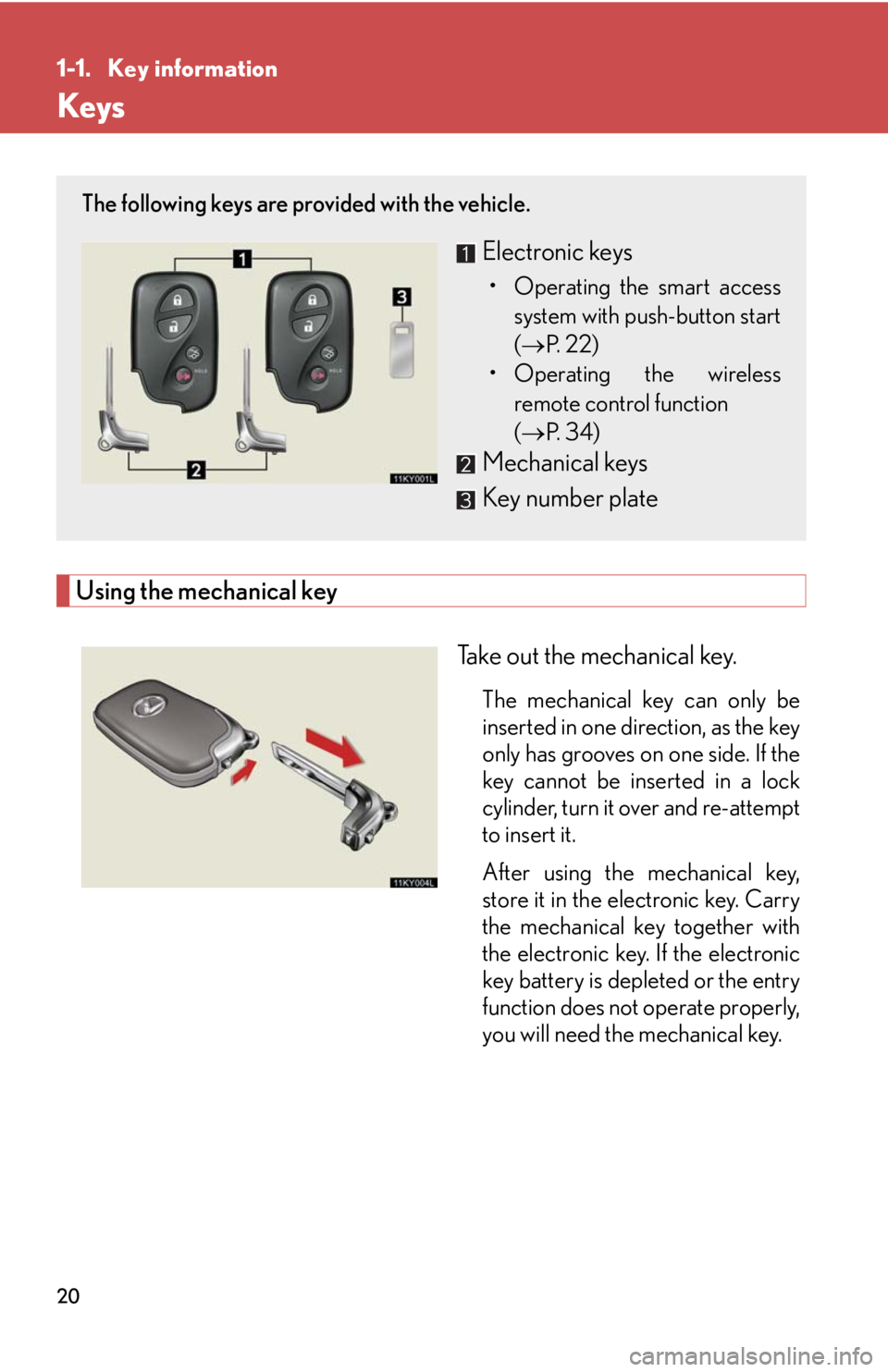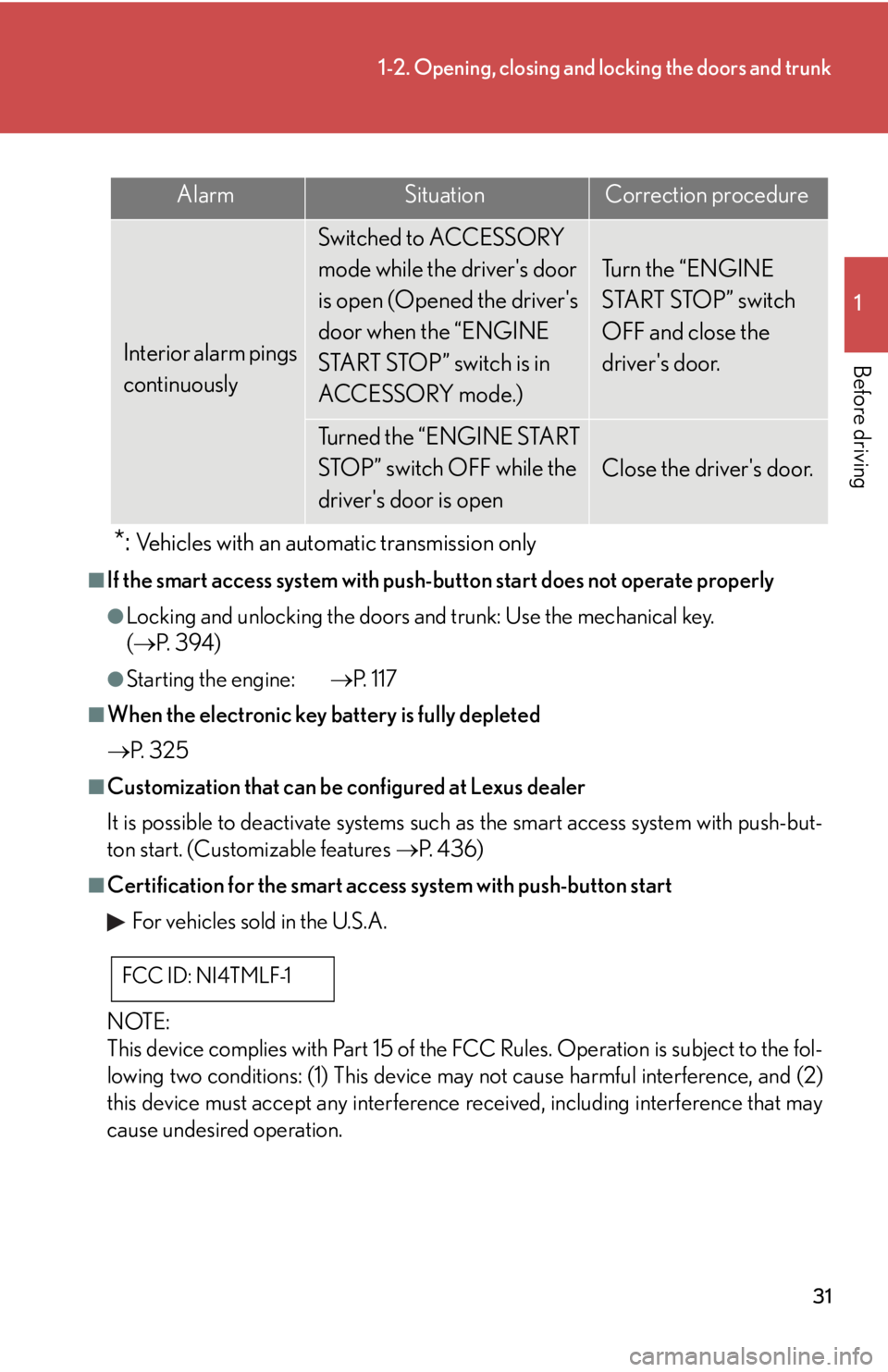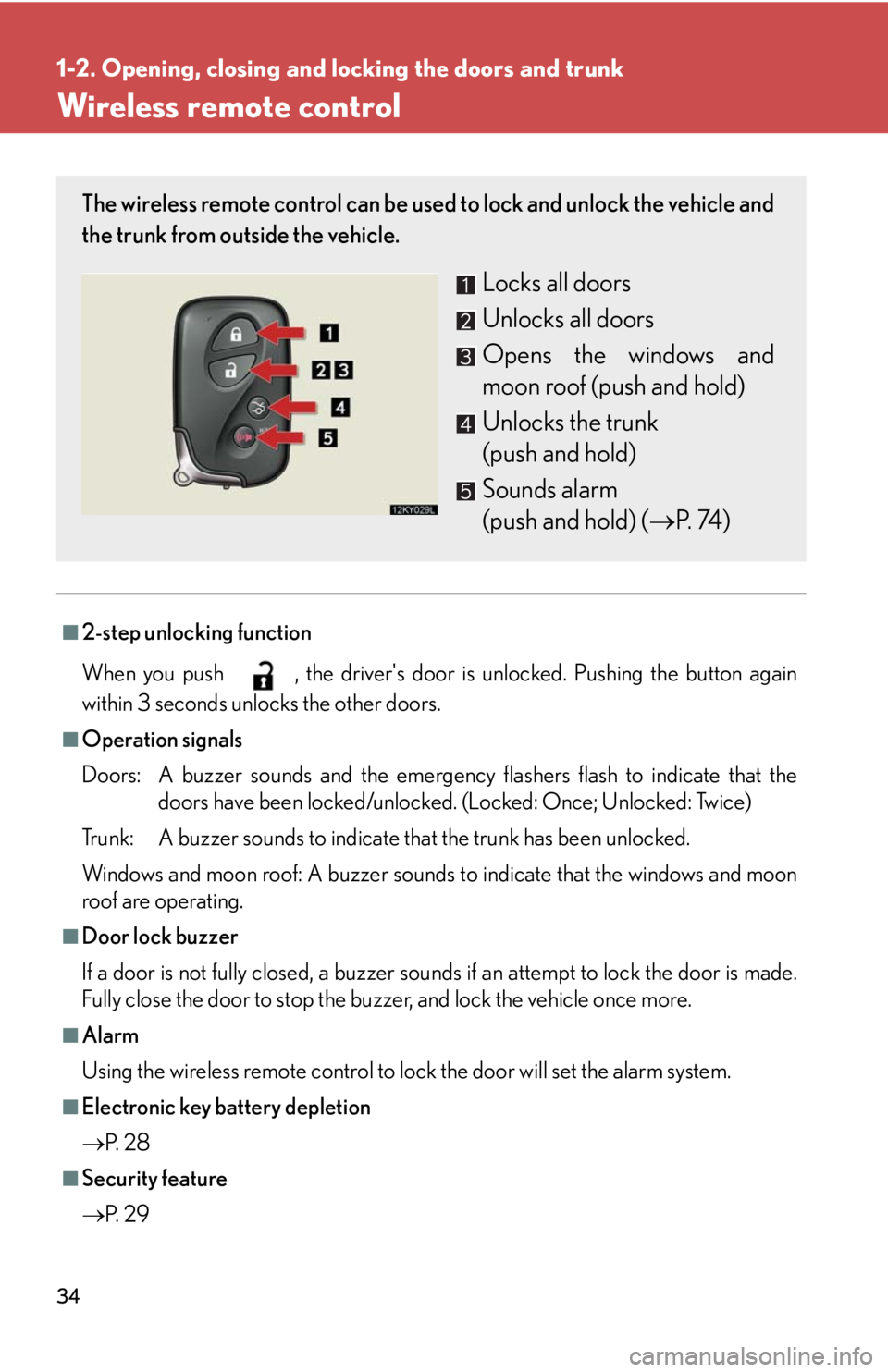2008 Lexus IS250 battery
[x] Cancel search: batteryPage 4 of 464

TABLE OF CONTENTSIndex
4
3-4. Using the storage features .... 236List of storage fe atures............... 236
• Glove box..................................... 236
• Console boxes ........................... 237
• Overhead console................... 238
• Cup holders................................. 239
• Bottle holders/ door pockets ................................ 241
3-5. Other interior features........... 242 Sun visors......................................... 242
Vanity mirror .................................. 243
Clock ................................................. 244
Satellite switches .......................... 245
Ashtrays .......................................... 248
Cigarette lighter ........................... 249
Power outlet .................................. 250
Seat heaters ..................................... 251
Seat heaters and ventilators .... 253
Armrest ............................................ 255
Rear sunshade ............................... 256
Trunk storage extension........... 258
Coat hooks ..................................... 259
Floor mat......................................... 260
Trunk features................................. 261
Garage door opener .................. 264
Compass.......................................... 269 4-1. Maintenance and care............ 274
Cleaning and protecting the vehicle exterior................... 274
Cleaning and protecting the vehicle interior .................... 277
4-2. Maintenance............................. 280 Maintenance requir ements .... 280
General maintena nce ................ 282
Emission inspection and maintenance (I/M)
programs ..................................... 285
4-3. Do-it-yourself maintenance............................ 286
Do-it-yourself service precautions .................................. 286
Hood................................................. 289
Positioning a floor jack.............. 290
Engine compartment.................. 292
Tires .................................................. 306
Tire inflation pressure.................. 316
Wheels............................................. 320
Air conditioning filter.................. 322
Electronic key battery ................ 325
Checking and replacing fuses ................................................ 327
Headlight aim.................................. 341
Light bulbs ....................................... 342
4Maintenance and care
Page 5 of 464

1
2
3
4
5
6
7
5
5-1. Essential information .............. 350If your vehicle needs to be towed ...................................... 350
If you think something is wrong ......................................... 356
Fuel pump shut off system ........ 357
Event data recorder ................... 358
5-2. Steps to take in an emergency .............................. 360
If a warning light turns on or a warning buzzer
sounds... ....................................... 360
If a warning message is displayed ....................................... 369
If you have a flat tire.................... 382
If the engine will not start ........... 391
If the shift lever cannot be shifted from P .............................. 392
If you lose your keys .................... 393
If the electronic key does not operate properly ....................... 394
If the vehicle battery is discharged ................................... 397
If your vehicle overheats .......... 400
If the vehicle becomes stuck ... 402 6-1. Specifications ............................ 406
Maintenance data (fuel, oil level, etc.)..................... 406
Fuel information ............................. 421
Tire information ............................ 424
6-2. Customization .......................... 436 Customizable features .............. 436
6-3. Initialization ................................ 441 Items to initialize ............................ 441
Reporting safety defects for U.S. owners........................... 444
Seat belt instructions for Canadian owners
(in French) .................................... 445
Abbreviation list .................................. 448
Alphabetical index.............................. 450
What to do if... ...................................... 462
5When trouble arises6Vehicle specifications
7For owners
Index
Page 20 of 464

20
1-1. Key information
Keys
Using the mechanical keyTake out the mechanical key.
The mechanical key can only be
inserted in one direction, as the key
only has grooves on one side. If the
key cannot be inserted in a lock
cylinder, turn it over and re-attempt
to insert it.
After using the mechanical key,
store it in the electronic key. Carry
the mechanical key together with
the electronic key. If the electronic
key battery is depleted or the entry
function does not operate properly,
you will need the mechanical key.
The following keys are provided with the vehicle.
Electronic keys
• Operating the smart accesssystem with push-button start
( P. 22)
• Operating the wireless remote control function
( P. 3 4 )
Mechanical keys
Key number plate
Page 26 of 464

26
1-2. Opening, closing and locking the doors and trunk
■Operation signals
A buzzer sounds and the emergency flashers flash to indicate that the doors have
been locked/unlocked. (Locked: Once; Unlocked: Twice)
■Conditions affecting operation
The smart access system with push-button start uses weak radio waves. In the fol-
lowing situations, the communication betw een the electronic key and the vehicle
may be affected, preventing the smart access system with push-button start from
operating properly:
(Ways of coping: P. 3 9 4 )
●When the electronic key battery is depleted
●Near a TV tower, electric power plant, gas station, radio station, large display,
airport or other facility that generates strong radio waves or electrical noise
●When carrying a portable radio, cellular phone, cordless phone or other wire-
less communication devices
●When the electronic key is in contact wi th, or is covered by the following metal-
lic objects
• Cards to which aluminum foil is attached
• Cigarette boxes that have aluminum foil inside
• Metallic wallets or bags
•Coins
• Hand warmers made of metal
• Media such as CDs and DVDs
●When multiple electronic keys are in the vicinity
●When another wireless key (that emits radio waves) is being used nearby
●When carrying or using the electronic key together with the following devices
that emit radio waves
• Another vehicle's electronic key or a wireless key that emits radio waves
• Personal computer or personal digital assistant (PDA)
• Digital audio player
• Portable game system
●If window tint with a metallic content or metallic objects are attached to the rear
window
Page 28 of 464

28
1-2. Opening, closing and locking the doors and trunk
■Battery-saving function
In the following circumstances, the entry function is disabled in order to prevent the
vehicle and electronic key batteries from discharging.
●When the entry function has not been used for a month or more
●When the electronic key has been left within approximately 3 ft. (1 m) of the
vehicle for 10 minutes or more
The system will resume operation when...
●The vehicle is locked using th e door handle lock switch.
●The vehicle is locked/unlocked using the wireless remote control function.
( P. 3 4 )
●The vehicle is locked/unlocked using the mechanical key. ( P. 3 9 4 )
■Electronic key battery depletion
●The standard battery life is 1 to 2 years. (The battery becomes depleted even if
the electronic key is not used.) If the smart access system with push-button start
or the wireless remote control function does not operate, or the detection area
becomes smaller, the battery may be depleted. Replace the battery when nec-
essary. ( P. 325)
●To avoid serious deterioration, do not leave the electronic key within 3 ft. (1 m) of
the following electrical appliances that produce a magnetic field.
•TVs
• Personal computers
• Cellular phones, cordless phones and battery chargers
• Recharging cellular phones or cordless phones
•Glass top ranges
• Table lamps
■To operate the system properly
Make sure to carry the electronic key wh en operating the system. Do not get the
electronic key too close to the vehicle when operating the system from the outside
of the vehicle.
Depending on the position and holding condition of the electronic key, the key may
not be detected corr ectly and the system may not operate properly. (The alarm may
go off accidentally, or the door lock prevention may not function.)
Page 31 of 464

31
1-2. Opening, closing and locking the doors and trunk
1
Before driving
*: Vehicles with an automatic transmission only
■If the smart access system with push-button start does not operate properly
●Locking and unlocking the doors and trunk: Use the mechanical key.
( P. 3 9 4 )
●Starting the engine: P. 117
■When the electronic key battery is fully depleted
P. 3 2 5
■Customization that can be configured at Lexus dealer
It is possible to deactivate systems such as the smart access system with push-but-
ton start. (Customizable features P. 4 3 6 )
■Certification for the smart access system with push-button start
For vehicles sold in the U.S.A.
NOTE:
This device complies with Part 15 of the FCC Rules. Operation is subject to the fol-
lowing two conditions: (1) This device may not cause harmful interference, and (2)
this device must accept any interference received, including interference that may
cause undesired operation.
AlarmSituationCorrection procedure
Interior alarm pings
continuously
Switched to ACCESSORY
mode while the driver's door
is open (Opened the driver's
door when the “ENGINE
START STOP” switch is in
ACCESSORY mode.)
Tu r n t h e “ E N G I N E
START STOP” switch
OFF and close the
driver's door.
Turned the “ENGINE START
STOP” switch OFF while the
driver's door is open
Close the driver's door.
FCC ID: NI4TMLF-1
Page 34 of 464

34
1-2. Opening, closing and locking the doors and trunk
Wireless remote control
■2-step unlocking function
When you push , the driver's door is unlocked. Pushing the button again
within 3 seconds unlocks the other doors.
■Operation signals
Doors: A buzzer sounds and the emergenc y flashers flash to indicate that the
doors have been locked/unlocked. (Locked: Once; Unlocked: Twice)
Trunk: A buzzer sounds to indicate that the trunk has been unlocked.
Windows and moon roof: A buzzer sounds to indicate that the windows and moon
roof are operating.
■Door lock buzzer
If a door is not fully closed, a buzzer sounds if an attempt to lock the door is made.
Fully close the door to stop the buzzer, and lock the vehicle once more.
■Alarm
Using the wireless remote control to lock the door will set the alarm system.
■Electronic key battery depletion
P. 2 8
■Security feature
P. 2 9
The wireless remote control can be used to lock and unlock the vehicle and
the trunk from outside the vehicle.
Locks all doors
Unlocks all doors
Opens the windows and
moon roof (push and hold)
Unlocks the trunk
(push and hold)
Sounds alarm
(push and hold) ( P. 74 )
Page 35 of 464

35
1-2. Opening, closing and locking the doors and trunk
1
Before driving
■When the electronic key battery is fully depleted
P. 3 2 5
■Conditions affecting operation
P. 2 6
■Customization that can be configured at Lexus dealer
Settings (e.g. trunk unlocking function) can be changed. (Customizable features
P. 4 3 6 )
■Certification for wireless remote control
For vehicles sold in the U.S.A.
NOTE:
This device complies with Part 15 of the FCC Rules. Operation is subject to the fol-
lowing two conditions: (1) This device may not cause harmful interference, and (2)
this device must accept any interference received, including interference that may
cause undesired operation.
NOTICE:
This equipment has been tested and found to comply with the limits for a Class B
digital device, pursuant to Part 15 of the FCC Rules. These limits are designed to
provide reasonable protection against harmful interference in a residential installa-
tion. This equipment generate s, uses and can radiate radio frequency energy and, if
not installed and used in accordance with the instructions, may cause harmful inter-
ference to radio communications. However, there is no guarantee that interference
will not occur in a particular installation. If this equipment does cause harmful inter-
ference to radio or television reception, which can be determined by turning the
equipment off and on, the user is encouraged to try to correct the interference by
one or more of the following measures:
●Reorient or relocate the receiving antenna.
●Increase the separation between the equipment and receiver.
●Connect the equipment into an outlet on a circuit different from that to which
the receiver is connected.
●Consult the dealer or an experienced radio/TV technician for help.
FCC WARNING:
Changes or modifications not expressly approved by the party responsible for
compliance could void the user's authority to operate the equipment.
FCC ID: NI4TMLF-1